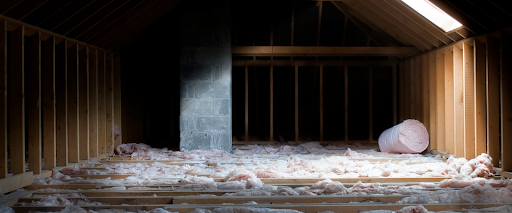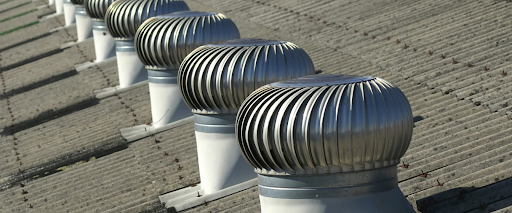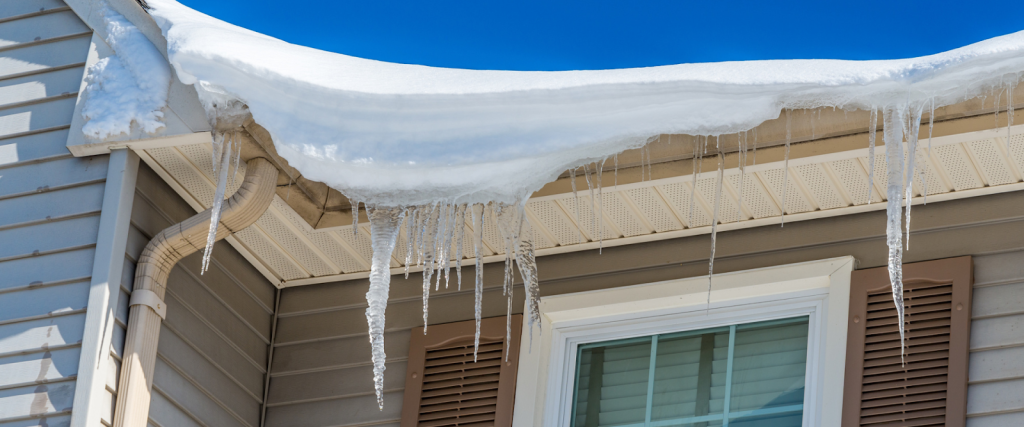Maintaining proper airflow in your attic does more than just regulate temperature; it plays a key role in keeping your entire home healthy. A well-ventilated attic helps lower energy costs, extends the life of your roof, and prevents moisture buildup that can lead to severe structural damage. Despite its importance, many homeowners don’t recognize the signs of poor attic ventilation until the damage is already done.
Issues like uneven indoor temperatures, mold growth, or warped shingles are often dismissed or misdiagnosed. But these can be early warnings of larger roof ventilation issues or hidden attic moisture problems that affect both comfort and long-term repair costs. That’s why early detection and regular checks are so necessary.
In this guide, Selective Remodeling breaks down nine clear signs of poor attic ventilation, explains what causes them, and shares practical steps to fix the problem so you can protect your home’s structure and stay comfortable all year long.
What Is Attic Ventilation and Why Does It Matter?
Attic ventilation refers to the system that allows fresh air to flow into and out of your attic, regulating temperature and moisture levels. A well-ventilated attic prevents heat buildup in summer, reduces moisture in winter, and extends the life of your roof. Without proper airflow, your home can face attic moisture problems or roof ventilation issues that lead to mold, rot, and higher energy costs. Good ventilation balances the exchange of indoor and outdoor air, keeping your home comfortable and structurally sound.
How Ventilation Works
Ventilation systems typically include intake vents (like soffit vents) and exhaust vents (like ridge vents). These work together to create a continuous airflow, pushing out hot, humid air and pulling in cooler, drier air. When this system fails, you’ll notice clear signs of poor attic ventilation that require immediate attention.
9 Clear Signs of Poor Attic Ventilation
Here are nine signs that your attic ventilation needs improvement, along with their causes and effects.
Excessive Heat in the Attic
If your attic feels unbearably hot in summer, it’s one of the earliest signs of poor attic ventilation. When air becomes trapped, attic temperatures can exceed 120°F, forcing your cooling system to work harder. This not only increases energy bills but also puts added stress on your roof’s structure and your home’s comfort.
Ice Dams on the Roof
In colder months, roof ventilation issues can cause warm attic air to melt snow unevenly on your roof. The water then refreezes near the eaves, forming ice dams. These block proper drainage, damaged shingles, and can cause leaks inside your home. Preventing this starts with ensuring your attic maintains a consistent temperature through correct airflow.
Mold and Mildew Growth
Dark patches on your attic insulation, rafters, or stored boxes are common attic moisture problems. Poor ventilation allows humidity to linger, creating the perfect environment for mold and mildew. Left untreated, this damages your attic structure and poses serious health risks. Adding roof ventilation improves airflow and reduces the likelihood of mold growth.
Peeling Paint or Wallpaper Indoors
Moisture doesn’t always stay in the attic; it often seeps into your living spaces. One visual clue is peeling paint or bubbling wallpaper, particularly in rooms beneath the attic. These symptoms suggest trapped humidity, which can result from insufficient airflow above the surface. The surface. It may also hint at a typical roof problem developing out of sight.
High Energy Bills
If your utility bills seem unusually high year-round, your attic could be to blame. Without proper ventilation, trapped hot air in the summer and cold air in the winter interfere with your HVAC system’s ability to regulate indoor temperatures. This imbalance leads to longer run times and higher costs. Scheduling regular inspections helps detect and address the underlying causes before energy costs spiral.
Damaged Shingles or Roofing Materials
Take a moment to inspect your roof. Do you see curled, blistered, or cracked shingles? These are clear roof ventilation issues caused by trapped heat and moisture beneath the surface. Left unaddressed, these problems can shorten your roof’s lifespan. If you’re considering roof remodeling, addressing ventilation should be part of the plan to protect your investment.
Condensation on Windows or Attic Surfaces
Water droplets forming on attic pipes, windows, or even the underside of your roof are indicators of serious attic moisture problems. This moisture builds when warm air cannot properly escape. Over time, condensation can soak into wood and insulation, creating long-term damage. Homes with flat roof structures are especially vulnerable without proper exhaust vents.
Musty Odors in the Home
A stale or musty smell, particularly in upstairs bedrooms or hallways, can stem from your attic. This odor typically indicates that mold is growing out of sight, often due to excessive humidity and insufficient airflow. One of the more subtle signs of poor attic ventilation is usually ignored until deeper issues arise.
Rusty Metal Components
Inspect the metal fixtures in your attic, including duct straps, nails, and electrical boxes. If you spot rust, it usually means moisture is lingering too long. Rust corrodes metal and weakens structural supports over time. This is a warning sign that your attic’s airflow needs attention. During roof proactive coating or repairs, professionals often catch these issues early.

How to Fix Signs of Poor Attic Ventilation
Solving signs of poor attic ventilation isn’t just about adding a vent or two. It requires a comprehensive examination of how your attic manages air, moisture, and temperature. Taking early action can prevent long-term damage, enhance comfort, and reduce utility costs.
Inspect Your Current Ventilation System
Begin by assessing the setup of your attic. Look for blocked soffit vents, clogged exhaust fans, or insulation stuffed too tightly against openings. Poor air circulation often leads to attic moisture problems, which can go unnoticed until severe damage occurs.
Install Additional Vents
If your attic lacks proper airflow, it may need more intake or exhaust points. Adding ridge vents, gable vents, or even powered fans can improve circulation and reduce heat and humidity. Balanced vent placement ensures air flows correctly through the space.
Upgrade Insulation Without Blocking Vents
Insulation plays a crucial role in regulating attic temperature, but it must be installed correctly. Ensure it doesn’t cover vents or restrict air movement. Use vapor barriers to prevent warm indoor air from rising and getting trapped. When planning a home upgrade or renovation, proper insulation and ventilation should be considered together.
Eliminate Mold and Control Moisture
If you’ve found mold or mildew, don’t just clean it; address the underlying cause. Moisture often lingers in poorly ventilated attics, creating a long-term risk to your roof and health. Installing attic dehumidifiers or improving airflow helps manage attic moisture problems before they return.

Conclusion
Recognizing the signs of poor attic ventilation is the first step to protecting your home from hidden damage. Issues like mold growth, excess humidity, and rising energy bills can all stem from inadequate airflow. Left unchecked, these problems may impact your roof’s longevity, indoor air quality, and overall comfort.
By identifying and addressing attic moisture problems early, homeowners can avoid costly repairs and create a healthier living environment.
Schedule a consultation with a professional to get a thorough assessment and practical solutions.
FAQs
What causes attic moisture problems?
Attic moisture problems often stem from inadequate ventilation, which traps humid air and prevents it from escaping. This can lead to mold, rot, and structural damage if not addressed.
How can I tell if my attic has roof ventilation issues?
Look for signs like excessive heat, mold growth, or damaged shingles. These indicate poor airflow and require professional inspection.
How often should I check my attic ventilation?
Inspect your attic annually, especially before winter or summer, to ensure vents are clear and functioning correctly.
Can I fix signs of poor attic ventilation myself?
While minor fixes, such as clearing vents, are DIY-friendly, complex issues like mold removal or vent installation require professional expertise from companies.

